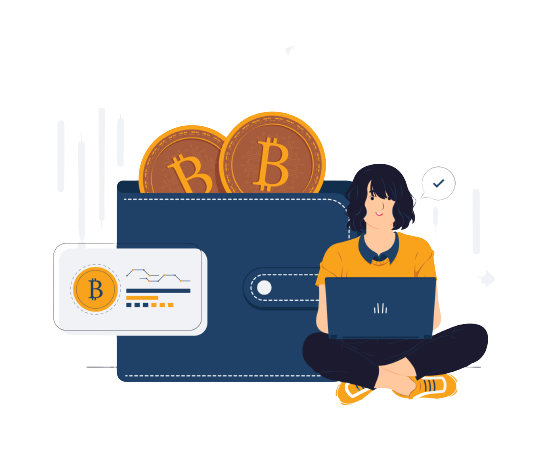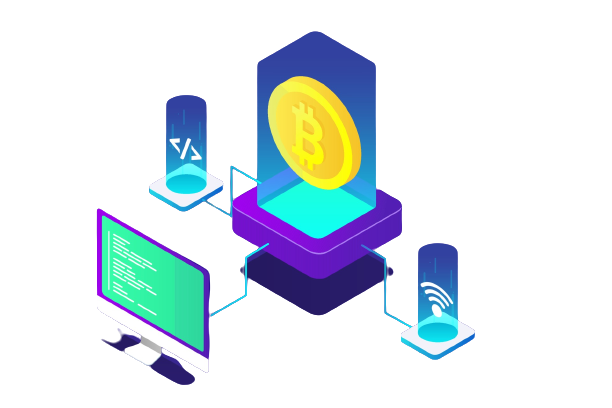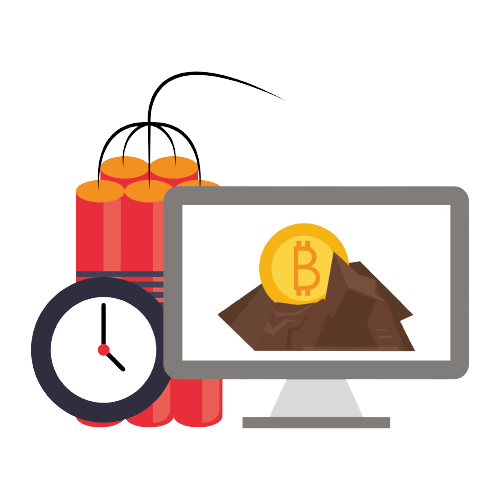
Many of you must have come across the ‘double-spending’ term in the world of cryptocurrency. The term double-spending simply refers to the use of the same fund twice or even more than that. There is no doubt that double-spending is not a good thing. This all takes place by manipulating the transaction data in a blockchain. When this happens, the individual can reclaim the cryptocurrency that is already spent.
Coins that have been reclaimed can once again be used by the individual. In the worst-case scenario, this process of altering the transaction data on the blockchain can be done multiple times. Imagine someone transferring some dollars to your account. Then by some means can reclaim that amount back into their respective account and use that money again and again? How big a fraud can this be? This is what happens when Bitcoin double-spending takes place.
What Is Double-Spending In Bitcoin?

So, what is Bitcoin double-spending? It is a problem in itself and it needs to be prevented before it even occurs. Identifying a Bitcoin double-spending is not that easy. This is one of the major flaws of digital currencies. It is like using a normal dollar bill with the same identification number again and again.
The same applies to Bitcoin double-spending. When certain requirements have been met, an individual can alter the transaction on the blockchain that has already been made earlier and reclaim Bitcoins that have already been spent and keep spending them.
How Is Double-Spending A Problem In Bitcoin?

From what we read above, it becomes clear that double-spending is not something that the crypto community requires. It is an issue in the crypto world. When the same Bitcoin is being spent multiple times, it obviously is a problem. Essentially, it is a fraud, right?
It becomes a problem for others who have invested in Bitcoins and for those whose Bitcoins mysteriously disappear after they have received them.
Double-Spending Transaction Attacks?
Double-spending attacks can only be carried out with digital currencies, as we just read. These attacks cannot be possible with physical currencies. When we purchase something for physical fiat money, we give away the physical currency to the opposite party. This money then cannot be spent again if you have used the products or services.
As a result of using credit or debit cards as payment methods, the bank ensures that a certain amount has been transferred to the account of the person or company from whom we have taken services or products. Bank acts as a third party here.
Whereas in the case of digital currencies like Bitcoin there is no third party or regulatory authority that controls the currency. This gives an advantage to the digital currency holder to reclaim the spent cryptocurrency and spend it again and again by altering the transaction data.
Bitcoin double-spending transactions have not been officially reported. But yes, Bitcoin double-spending attacks have been in existence for quite some time.
Preventing Double-Spending Attack On Bitcoin

Double-spending is a flaw in the cryptocurrency world and that is a fact now. Due to its ability to prevent double-spending, blockchain has always been at the top of the list. The possibility of bypassing the complete network of miners and then inserting an extra block on the blockchain is very low.
Let us say that, what if a miner with bad intentions tries to do this? Well in this case, when the miner inserts the manipulated block, the chances of this block being accepted are very low as the blockchain network moves very quickly. And by the time the block is to be considered, it gets outdated.
In the worst-case scenario, let us say that even if the block got accepted, the network will have it rejected by sending the information. Since Bitcoin and other cryptocurrencies transactions take a longer verification time, it becomes hard to manipulate a block as the process is way too complex and a lot of computing power is required for this.
Types Of Double-Spending Attacks?
Below are the types of double-spending attacks:
Finney Attack:
Finney attacks happen when the merchant moves ahead with an unconfirmed transaction. In general, it is advised to wait for a Bitcoin transaction to be confirmed before moving any step further.
In a Finney attack, the crypto is transferred from one wallet to the other (both these wallets belong to the same person) but the block is not validated by the miner on an immediate basis. Then the same person sends the crypto to a third wallet that belongs to some other user.
The attacker is able to validate the block when the third user accepts the transaction without confirming it with the network. Here the source wallet is then used for a second transaction without the first one being confirmed to make a purchase. As a result, Finney’s attack can take place.
Race Attack:
As a simple explanation, a Race attack occurs when crypto is used to create two transactions at once with the motive of spending it twice (double-spending).
Similar to the Finney attack, the Race attack also takes place when an unconfirmed transaction is accepted by a third-party recipient. This attack is even easier to carry out when the attacker is able to connect with the recipient’s node directly. This direct connection to the node allows the attacker to carry out the transaction and deposit it to the miners directly.
51% Attack:
This attack is related to the control of the network’s hash rate. A miner or a group of miners can attack through this double-spending type when they have control over more than half of the hash rate.
This is also known as the majority attack. ‘51% attack’ takes place when a single miner of a group together has the ability to generate blocks on the blockchain quickly as compared to the other miners.
What Is Bitcoin Double Spending Unconfirmed Transactions?

Since we are now aware of the types of double-spending attacks, it is obvious that unconfirmed transactions need to be taken seriously into consideration. Unless the transaction gets confirmed, it is always advisable not to take a step forward when dealing with cryptocurrencies.
Double-spending Bitcoin unconfirmed transactions take place when a user sends funds to some other Bitcoin wallet and a miner has not yet confirmed the same. Before accepting further processes, it is advised to always check the network for the transaction status. Move forward with validated transactions only.
How Do You Detect Double-Spending?
Double-spending attacks can be detected by monitoring the network transactions and comparing them with yours to see whether the inputs match. Thus, one can determine whether a transaction has been confirmed or not. It is better not to move forward with the same transaction if it matches a transaction on the network.
How Does Double-Spending Work In Blockchain?
Let us first understand what a blockchain is in a quick overview. This will help to understand much better how double-spending works in Blockchain. There is a list of blocks with a hash on the blockchain. When a user wants to move ahead with a transaction, a block gets created by the blockchain and is sent to the user to get validated. The user needs to validate this block for the transaction to take place.
When a fake block is created and added to the blockchain and it gets validated, a double-spending attack takes place. The attacker here even gets incentives for these fake blocks created and validated.
Double-Spending Illustrations For Easy Understanding!

Let us now see with an example how double-spending happens.
Assume that a user wants to take services from two merchants. The user transfers the Bitcoins to the first merchant. The user then will send the same fund to the second merchant by manipulating the first transaction in the blockchain. In this case both the merchants accept the Bitcoin without verifying if the miners have confirmed the transaction or not. This is the case of double-spending. The same Bitcoin is being used for two different transactions.
Is Double-Spending A Problem In Every Crypto?
Yes, double-spending can be a problem in every cryptocurrency and not just Bitcoin. But for double-spending to happen, the particular crypto blockchain needs to have permission from a publicly distributed ledger that is visible to each network node. If this is not the case then a particular crypto will prevent double-spending from taking place.
Double-Spending Challenges On Centralized And Decentralized Authority

To prevent double-spending either a centralized or decentralized approach can be taken into account. Although this is just an assumption of what will happen if such a scenario happens.
We do know that unlike the common currency used by different countries which are governed by a centralized authority, cryptocurrencies have no such governing bodies. Let us say that if a centralized authority starts to govern cryptocurrencies, the whole scenario will change from what it is now.
The whole process will become more expensive. As multiple authorities will become responsible for authenticating and transferring funds from one wallet to another. Increased expenses will be the biggest challenge faced when a centralized authority is given the charge. So it is not easy when one says that cryptocurrencies should be centralized to avoid fraud. Even the general currencies come across manipulations and frauds.
On the other hand, resolving double-spending issues using a decentralized authority is also tough keeping in mind the power that is needed to do this. With a decentralized approach, the number of servers required is more in numbers. But it also becomes a key necessity to store the public transaction ledgers on these servers to be able to have these transactions validated.
On decentralized authority, there is an issue of frauds like double-spending attacks. To be able to resolve this issue, consensus algorithms can be used that will help to sync the various servers. This again requires computational power to be able to reach that security stage.
Can Double-Spending Be Prevented Completely?

We already read that double-spending is not that easy to do. There are many steps taken by blockchain to be able to cancel such transactions. Neither is it that easy to sideline all the miners and execute a double-spending attack.
But yes, we cannot deny the fact that double-spending can happen. We even mentioned that consensus algorithms can be able to prevent it. But the computational power that will be required to do this will be too costly. The better option could be to check the transactions on the blockchain and move ahead with only confirmed and validated transactions.
Becoming Impatient and investing in cryptocurrency will not work. One needs to keep a track of all that is happening in the crypto market, learn from others’ mistakes, double-check each transaction before moving forward and deal with only trusted sources and wallets that help to keep your Bitcoins safe.
What Can Be The Possible Solutions To Prevent Double-Spending?
For now, it is a blockchain or a centralized authority! The possible solution to prevent double-spending can be either of these two.
A centralized authority will help manage the transactions in the same way we have for banks. A third party will be the one authorizing and confirming that the funds have been transferred. How far can this be applied is again questionable though. As governments see the risk of the fiat currency losing its importance if crypto is treated as regular currency.
The important option is the blockchain. The blockchain works on a certain consensus mechanism which verifies transactions. It is this mechanism that makes sure that a transaction is verified by each node. Because they are verified by each node, the double-spending attacks made after this point will not be effective and will get rejected.